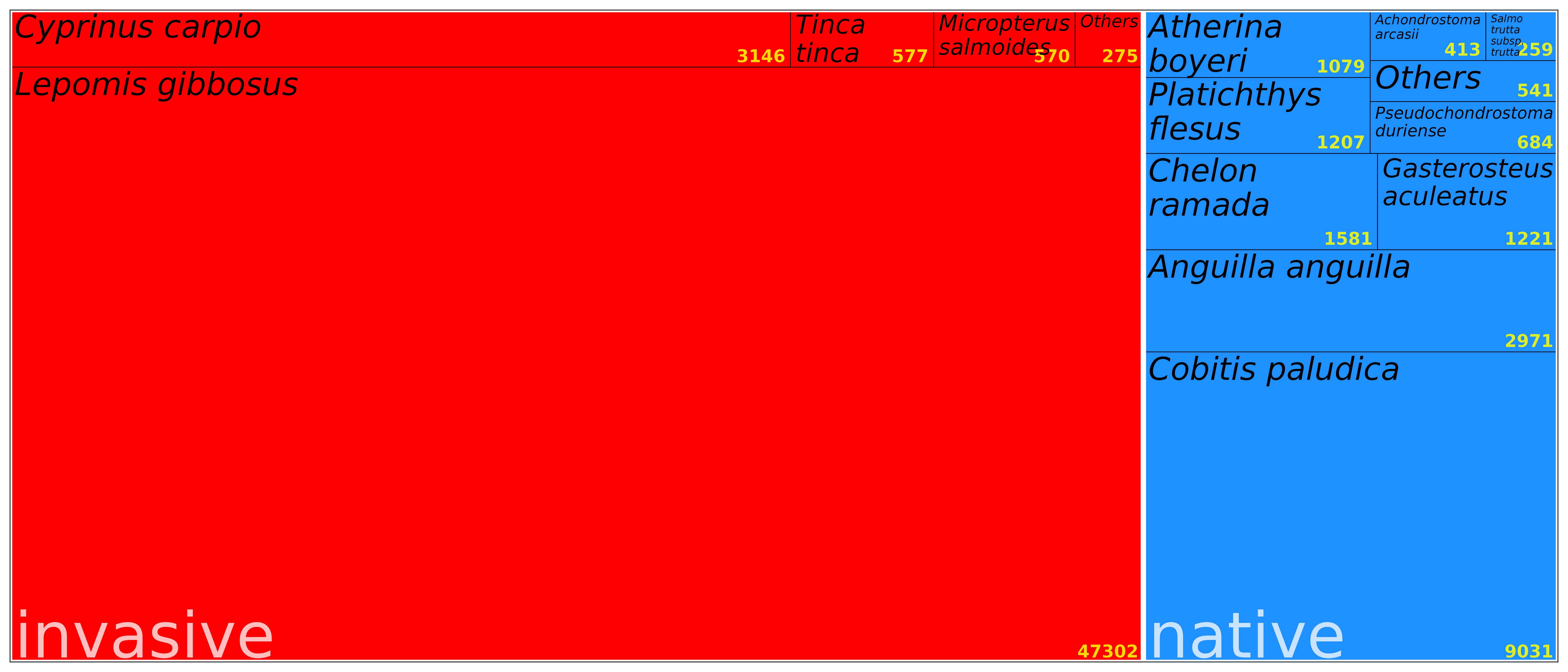
Treemap showing the total number of individuals of the most representative species during the long-term monitoring. The area of each rectangle is proportional to the total abundance of the species in all samples collected and the yellow numbers in the bottom right corner indicate the total abundance per species. Red background colour refers to the invasive species, with the category others corresponding to the least abundant species in the group, in this case, representative of two species: Gobio lozanoi (n = 255) and Carassius auratus (n = 20). Blue background colour refers to the native species, with the category others corresponding to the least abundant species in the group, in this case, it is representative of eight species: Mugil cephalus (n = 167), Salmo trutta subsp. fario (n = 162), Dicentrarchus labrax (n = 100), Chelon auratus (n = 51), Chelon labrosus (n=28), Squalius carolitertii (n = 20), Petromyzon marinus (n = 12) and Alosa (n = 1).